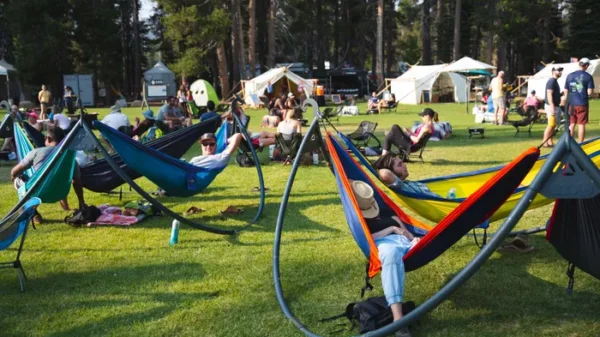Climate-Adaptive Wellness: A Response to Rising Global Temperatures
As the world grapples with the reality of rising global temperatures, wellness practices are adapting to help individuals manage the health impacts of hotter climates. Climate-adaptive wellness focuses on innovations and lifestyle changes designed to keep people safe, comfortable, and healthy amidst increasingly warmer conditions.
The Importance of Climate-Adaptive Wellness
Climate change is no longer a distant concern—it is an everyday reality affecting people across the globe. Higher temperatures pose significant health risks, including heat exhaustion, dehydration, and heatstroke. Climate-adaptive wellness seeks to mitigate these risks through proactive strategies that empower individuals to maintain their health even as temperatures soar. This trend combines technology, urban design, and personal lifestyle shifts to create comprehensive solutions.
Cooling Technologies: A Modern Solution
One of the most significant advancements in climate-adaptive wellness is the development of cooling technologies. Innovations such as personal cooling devices, advanced air conditioning systems, and temperature-regulating fabrics are becoming essential tools. Wearable cooling vests, for example, use phase-change materials to absorb body heat, keeping users cool without needing an external power source. Additionally, tech companies are working on smart home systems that monitor indoor temperatures and adjust settings automatically to optimize comfort and energy efficiency.
Heat-Resilient Urban Planning
Urban environments face unique challenges due to their concentration of concrete, asphalt, and limited green spaces, which can exacerbate the heat island effect. Climate-adaptive wellness incorporates urban planning strategies that prioritize heat resilience. This includes creating more shaded areas, planting trees, and developing green roofs and walls that help absorb heat and cool the air. Cities around the world are beginning to adopt these measures, recognizing that sustainable urban design is crucial for maintaining public health in warmer climates.
Lifestyle Adjustments for Hotter Climates
Adapting to hotter temperatures involves more than just technological solutions; it requires lifestyle changes that help individuals manage their daily activities safely. Climate-adaptive wellness emphasizes hydration, lighter clothing made from breathable fabrics, and modified exercise routines that account for heat. For instance, fitness experts recommend shifting workouts to early morning or late evening hours to avoid peak heat. Additionally, wellness programs are incorporating heat-safety education, teaching people how to recognize the signs of heat-related illnesses and take preventive measures.
Integrating Wellness with Sustainability
The movement toward climate-adaptive wellness also aligns with broader sustainability goals. As individuals and communities work to mitigate the effects of heat, there is a growing emphasis on eco-friendly solutions. Cooling technologies that reduce reliance on energy-intensive air conditioning and urban designs that incorporate natural elements help to reduce carbon footprints. This sustainable approach not only benefits personal health but also contributes to the health of the planet.
Global Innovations Leading the Way
Around the world, different regions are adopting unique climate-adaptive wellness practices tailored to their specific conditions. In areas prone to extreme heat, local governments are collaborating with wellness experts to introduce community cooling centers and heat-safety campaigns. Countries like Japan have pioneered innovative cooling textiles, while nations in the Middle East are incorporating ancient architectural techniques, such as wind towers, into modern designs to naturally ventilate buildings.
The Future of Climate-Adaptive Wellness
The future of wellness will likely be increasingly tied to the ability to adapt to environmental changes. Innovations in technology and urban design, coupled with changes in personal habits, will play a crucial role in building resilience against rising temperatures. As more people recognize the importance of climate-adaptive wellness, we can expect to see a surge in products and services that cater to maintaining health and comfort in a warming world.
Conclusion
Climate-adaptive wellness is a necessary evolution in response to global temperature increases. Through a combination of technology, sustainable urban planning, and lifestyle adjustments, individuals and communities are learning to thrive in hotter climates. This trend underscores the importance of proactive and adaptive health practices that protect both individual well-being and the environment, setting the stage for a resilient future.



































